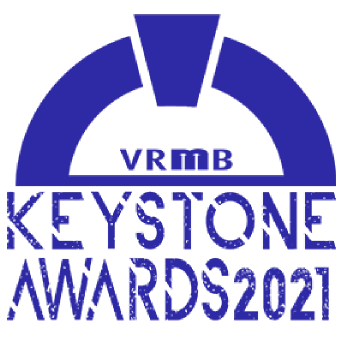Environmental sustainability in vacation rental management is a tremendous double bottom line opportunity. It unlocks a new marketing vertical for promotion (leads to increased earnings) and is excellent for the local and global environment (positive social impact). A great and easy way to have a positive environmental impact for a vacation rental company is to offset its carbon emissions.
Going carbon neutral for vacation rental companies can be done in three steps:
- Calculate your energy consumption
- Convert consumption to carbon emissions
- Purchase annual carbon offsets
As we’ll see, going carbon-neutral is relatively straightforward. The calculations are just multiplications with data you already have on hand. On top of that, once you have a good carbon offset process developed, you’ll be able to extend that service to your guests. This is a great way to boost the guest experience while also doing a good thing for the environment.
Before we start: Carbon offsetting 101
In the hospitality industry, most carbon dioxide (CO2) emissions come from the production of energy for the heating, cooling, cleaning and electricity consumed by the properties (whether booked or empty). In rural and remote areas, there’s an increased carbon footprint generated due to transport for operations relating to cleaning, turnover, maintenance, and checking in the guests.
Carbon offsetting is the practice of capturing greenhouse gasses (usually carbon dioxide) emitted by those operations.
To date, the easiest and most efficient way to remove carbon from the atmosphere is the natural one: growing trees! As a tree grows, it captures CO2 and breathes out oxygen. Simple as that. Flashback to elementary grade bio, right?
Although the ideal situation for a vacation rental company would be to reduce emissions altogether, in some locations, it’s just not possible. Your electricity may come from a mix of hydro, nuclear, fossil fuel, and renewables. And reducing consumption can only go so far until the guest experience is affected. Some guests wouldn’t mind lights off at sunset or pumping their own water. But let’s face it, only a very very small fraction of travelers would be up for doing that. People travel to getaway and have a good time. So if a vacation rental manager wants to claim his operations are carbon-neutral while still offering all the modern comforts, offsets are a low-cost and easy initiative to implement.
Last point. We previously mentioned planting trees. Probably not something you bargained for. As we’ll see later on, tree-planting is a carbon offset strategy vacation rental managers can outsource at low cost. So don’t stop reading just yet. You won’t have to plant the trees yourself!

Getting started: gather the raw data
So how can vacation rental managers offset their carbon footprint? The first step is to find out how much CO2 your properties produce each year. This is where your accounting and bookkeeping skills will shine. It’s time to unearth past utility bills.
Electricity
If 100% of your utility expenses come from electricity, all you have to do is add up the total “kWh” for the year. It’s usually listed somewhere on the bill above the amount due. Some energy providers provide yearly tallies – so all you have to do is find last year’s December bill.
Oil, gas, fuel
If you heat with oil, gas, or fuel, you’ll need to find out how much you consume annually (in gallons/pounds or liters/kilograms). This information will also be included in your bills. If you have a reservoir on your property that you fill every second or third year, you can run a napkin calculation to estimate the total amount of fuel used. We’re looking for ballpark figures here. As we’ll see later on, buying carbon offsets isn’t expensive. So even if you overestimate, it won’t substantially impact your final cost.
Not only your vacation rental
That was for the vacation rental properties in your portfolio. What about your office? Remember to run the numbers for that. Your office emissions are part of your general emissions too!
If you operate in a rural setting or cottage country, you should also estimate the emissions related to transportation to and from the properties. All you need here is the average distance traveled to the property in a year. To calculate this, look at your total reservations for the previous year. Multiply that number by the distance traveled to the property, and you have your yearly total. Then multiply by two to account for the return trip.
Calculate your total CO2 emissions
Now that you have the raw data gathered, it’s time to calculate how much carbon your vacation rentals emit.
Electricity
For electricity, you can use online calculators to estimate how much carbon was produced from your kWh’s. But because electricity production is a mix of energy sources (gas, coal, hydro, nuclear, renewables) which varies based on location, there isn’t a clear-cut equation you can use to convert the kWh into tons of CO2. The best source for answers is your energy provider. Most environmentally-conscious energy producers will have a kWh to tons of CO2 calculator on their website that reflects their energy mix. But in the odd chance your energy provider can’t (or won’t) give you that information, you can use estimators. Here are a few resources depending on where you operate:
- US – Environmental Protection Agency (EPA)
- Canada – Natural Resources Canada (NRCAN) and Carbonzero
- Europe – carbonfootprint.com is a general resource, but if possible, check with your local provider for a more accurate estimate
- Australia – Powershop
Oil & gas
As for natural gas or oil, here are some of the multiplication factors to convert the weight of fuel into tons of CO2. It’s essential to take into account the units here:
- Natural gas: 0.0549 metric tons CO2 per thousand cubic feet (Mcf)
- Oil: 0.43 metric tons CO2/barrel
*Tip: use Google to convert liters into cubic feet or barrels to be able to use the quick conversions listed above.
Transport
Finally, this calculator will convert your total car mileage traveled into CO2 emissions.
All that’s left now is to add all the carbon weights from the various sources to get your yearly emissions total.
Two ways to offset your vacation rental company’s carbon footprint
With the total tons of carbon emissions calculated, it’s time to sequester (capture) those greenhouses and store them somewhere safe. You’d think by now there’s a device that can do that. But surprisingly, the simplest solution – planting trees – is the most cost- and time-efficient. For reasons related to physics and thermodynamics, carbon sequestration via tree growth will likely remain the #1 offset strategy for years to come.
All this to say, there are a number of websites that offer carbon offsets via tree planting. They’re pretty simple to use too. Just tell them how many trees you want to be planted (via tons of CO2 you wish to offset), and they take care of the rest. For more complicated situations, all these sites will also work with you to calculate your tons of CO2 to ‘trees planted’ ratio. Here are a few sites that we trust and that make the experience seamless:
- Ecologi (Hostfully uses this company to offset its carbon footprint)
- One Tree Planted
- Terrapass
Alternatively, you can make donations to programs that invest in tech startups that are studying ways to combat climate change. However, the challenge here is that the link between investing into future “green” technology and having a direct immediate positive result isn’t so obvious. In other words: there’s no way to know if your $100 donation will guarantee an outcome in future years. That’s why we recommend planting trees.
What to look for in a good carbon offset program
It’s one thing to promise to plant trees. But if you want to go the extra mile, make sure that the program you go with plants trees in a sustainable manner. Specifically, look for messaging that shows how the program managers take into account the local ecology when selecting which type of tree to plant. This ensures that your social impact initiative will offset your carbon emissions but also enhance the natural habitat in the area the reforestation takes place.
How to advertise your carbon offset program
Reforestation programs always have trust and verification mechanisms in place. This ensures that the offsets you bought actually materialize. Usually, once your offset purchase goes through, you’ll receive two marketable assets. The first is the certification that your company paid to have the trees planted. This usually takes the form of an email, an image, or a PDF attachment. Such assets are perfect for your company’s direct booking site – specifically on the About us page. The second piece of content you’ll receive are badges you can include in your email signature or on the footer of a website. Depending on your vacation rental company’s branding style, these badges can also be used to create an image on the listing site photos.
Offer guests to offset their travel carbon footprint
If you want to go the extra mile, you can also offer carbon offsets for your guests via an upsell once they check in. Here you’re just acting as the intermediary between the guest and the reforestation company of your choice. To streamline the process, you can use the marketplace feature of your digital guidebooks to make the process easier for guests. Since your guests may be arriving from all over the world, you can offer various lengths of airfare. Here’s an example using the Hostfully Digital Guidebook Marketplace for a property in Madrid, Spain:

Once the guest completes the purchase process in the guidebook, place the order with the reforestation program and forward the purchase confirmation email to the guest. You can learn more about all the features of the Guidebooks here (Hostfully users can learn how to set up the Marketplace here).
 Other considerations when thinking of carbon in vacation rentals
Other considerations when thinking of carbon in vacation rentals
Buying offsets is a great start to environmental sustainability. For vacation rental operators planning to expand, acquiring properties that emit less makes it easier to calculate and offset. The rise in popularity of glamping or guests renting tiny homes is an example of a win-win when it comes to carbon emissions. You can offer something unique, with extremely high profit margins, and very little carbon emissions.








